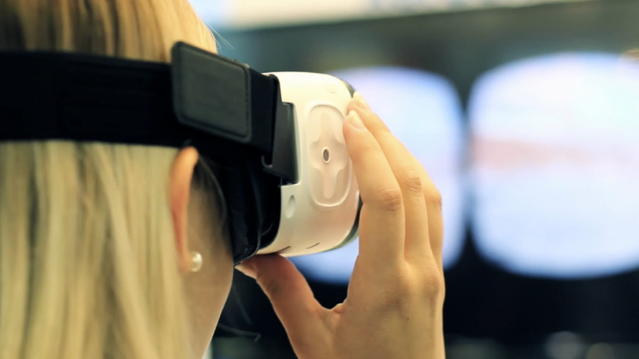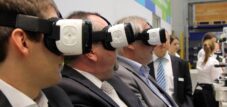Conquer the market with moving animations
Until recently, 360-degree videos were mainly popular in the leisure and entertainment sectors. Extreme athletes or nature filmmakers like to use them for spectacular videos, and games are also becoming more and more fashionable in the gaming scene. But since 2016 at the latest, this new form of storytelling has also been spreading in industry and business. On the one hand, this is due to the ever-increasing spread of playback devices such as virtual reality glasses (in all price ranges: from Google Cardboard to Oculus Rift or Microsoft's HoloLens ) and, on the other hand, because of the diverse possibilities of the relatively new technology are slowly being recognized in the world of work.
Since the videos provide a full all-round view, a lot more information can be conveyed clearly. And unlike traditional videos, the user of 360-degree videos often has full control over what they see. He alone determines the course of the animation. The new technology therefore requires the producers of 360-degree videos to use completely new ways of storytelling: It is now less about the pure WHAT (content) and more about the HOW (experience). For the animation to have the greatest possible impact, the viewer should immerse themselves as deeply as possible in the new world.
This offers companies completely new opportunities for visualizing their content, services and products. The animations are suitable for interactive tours and tours of companies, their assembly halls or laboratories. But even in public facilities such as offices or hospitals, the user can be given a good insight into the rooms in advance. Another example are museums and galleries, which provide potential visitors with upcoming or current exhibitions in detail and can provide interested parties with a lot of additional information.
VR apps for integrating 360 degree content
A separate app offers companies additional interaction options. Through gestures or head movements, the user can be able to independently (e.g. using eye control) call up different animation scenarios or additional information about the simulated content. Advantage of this function: By controlling the process, the user experiences the content much more intensively than with a passive view, which is why they are more concerned with the product or process being presented ( immersive reality ). An app also has the advantage that it gives interested parties access to the animated content regardless of location or occasion. For example, a manufacturer's app designed for a trade fair appearance can be made available to a wide range of users by uploading it to the Android or IOS store. As business interest in the applications grows, the number of developers and providers of corresponding VR solutions ; which will lead to a constantly growing variety of apps.
360 degree animations as a presentation & planning tool for systems and objects
Real estate and project developers were among the first industries to recognize the potential uses of the technology. Whether it's the construction of a complex new production facility, the construction of a new house or the presentation of an apartment: all of these projects can be presented so realistically with 360-degree videos that the viewer can make a decision on this basis.
The advantage of using 360-degree technology in the planning and construction of industrial plants is obvious: developers can present a project extremely clearly in a virtual 360-degree space and, if necessary, incorporate the customer's requests for changes into the animation relatively easily. The coordination is faster and more efficient. During implementation, clients can see the construction work and progress live for themselves without having to be on site. This is particularly advantageous for international projects, as monitoring can literally take place at your desk.
Personnel planning and press conferences with 360-degree videos
Another area of application for the use of 360-degree clips is personnel recruiting, where applicants can be given a first impression of their future job with a potential employer during a virtual tour. Liebherr , a well-known manufacturer of refrigerators and freezers, is already using 360-degree videos as an innovative tool to attract new employees . This gives interested parties the opportunity to take a closer look at the company and get to know the career opportunities within the group. The target group for the presentation are students who are interested in training at Liebherr. During a virtual tour, you can look over the shoulders of trainees from various areas and thus gain an improved insight into the working world of the company.
360-degree films are also suitable for use at press conferences. The chip manufacturer Intel event for 250 journalists using virtual reality technology at CES 2017 As a - only partly ironic - precautionary measure, vomit bags were distributed in advance (but fortunately they were not needed). Action scenes such as a parachute jump over the Nevada desert were shown. From there it went live to a solar system on site. According to Intel, this was the largest live 360-degree industrial inspection using 4K video to date. In order to take 250 people into virtual reality at the same time, several kilometers of cable had to be laid. The enormous amounts of data that had to be handled also posed a challenge. The demo video should require three gigabytes per image, which corresponds to a storage requirement of around 180 gigabytes per second at 60 images per second. The limit is not the ideas or playback devices, but - as is so often the case - the processing capacity of the immense amounts of data.
Use of 360-degree films at trade fairs and conferences
Instead of having to laboriously install their products at the trade fair stand, 360-degree videos give exhibitors the opportunity to present in an animated and interactive way In addition to the space and cost savings, an advantage lies in the diverse design options with which the content can be created individually for the customer. The presentation can be carried out either on the desktop or mobile on VR glasses, tablets or the visitors' smartphones. It is important that on-site technical support ensures that the systems function smoothly. Nothing is more annoying and damaging to an exhibitor's image than presentation technology that doesn't work properly.
There are therefore many new possible uses for 360-degree films in the economic environment, although the scope is far from being exhausted. It will be interesting to see what ideas companies and software developers will surprise us with in the future. We remain excited!


